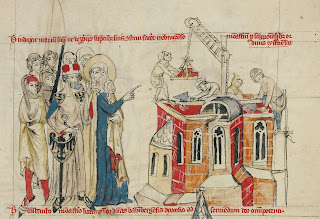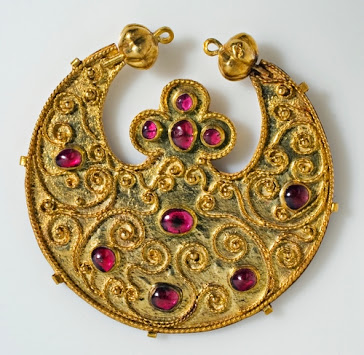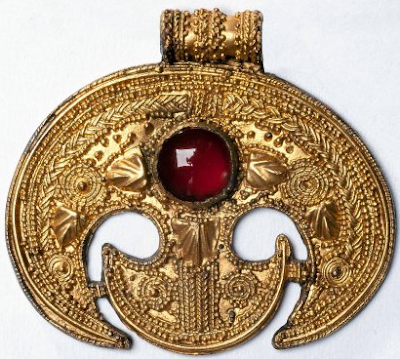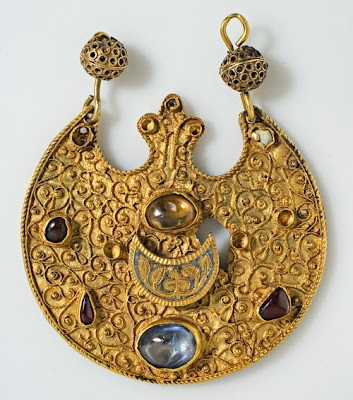 | The Środa Treasure is a hoard of silver and gold coins, gold jewellery and precious stones. The hoard dates from the mid 14th century. In 1985 a worker doing renovation work in an old house in the town square smashed an urn filled with 3,000 silver coins. It was quickly secured by Communist authorities. | 
Środa is a medieval town in Silesia, southwestern Poland. |
Three years later more gold and silver started turning up. The finds were kept quiet and much of the discovery vanished into private hands.
 | So much was found that eventually someone thought to scour the municipal dump, turning over piles of rubble taken from renovation projects. More treasure was found there, including gold jewelry. |  |
 | The Środa Treasure is one of the most valuable archaeological finds of the 20th century. Much of the treasure is thought to have been lost to looting. |  |
 | Over the following years, archaeologists and historians have speculated about the treasure's origins, while museums and wealthy individuals have competed for pieces of the treasure at auction. The treasure most likely belonged to the Emperor Charles IV of the House of Luxemburg. Around 1348, needing funds to support his claim to the Emperorship, Charles pawned various items to the Jewish banker Muscho (Mojżesz, Moishe) in Środa. |  |
 | Soon afterwards, the black plague descended on Środa. Mojżesz was never heard of again. It's believed that he either fled from the plague-struck town, died of plague, or perhaps fell victim as Jews were blamed for spreading the plague. What is certain is that no one ever reclaimed the treasure, which was left hidden in the town for hundreds of years. |  |












No comments:
Post a Comment